Mechanism of tsunami generation
①Seabed rises due to the occurrence of a subduction zone earthquake.
②Sea level rises with the rise in the seabed.
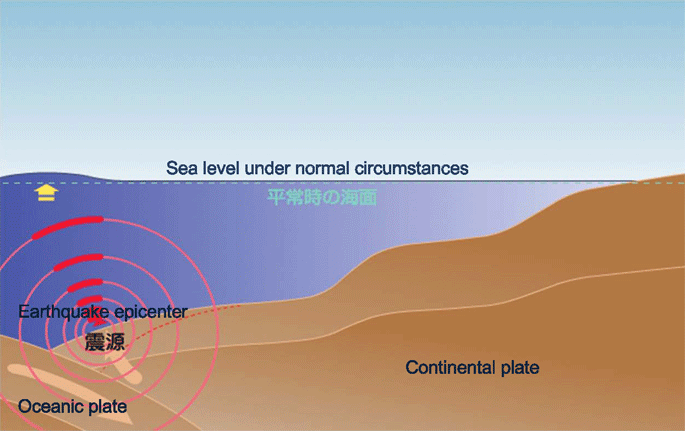
③A tsunami is generated in accordance with the rise in sea level.
・Mega swells, long wavelength
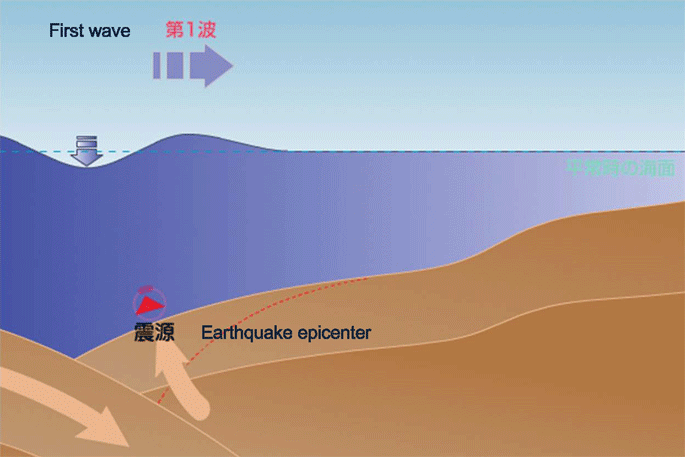
④After the first wave, the second and third waves attack in succession.
・The tsunami piles up as this process is repeated.
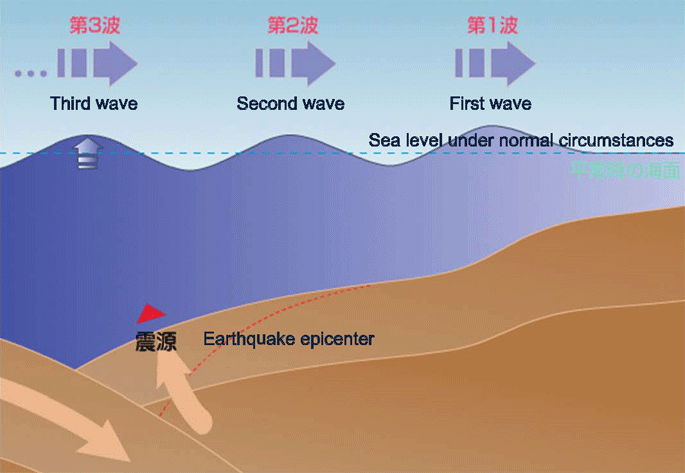
⑤Arrival of a Tsunami
・The wave height increases when a tsunami approaches a coast (i.e., when the water depth reduces).
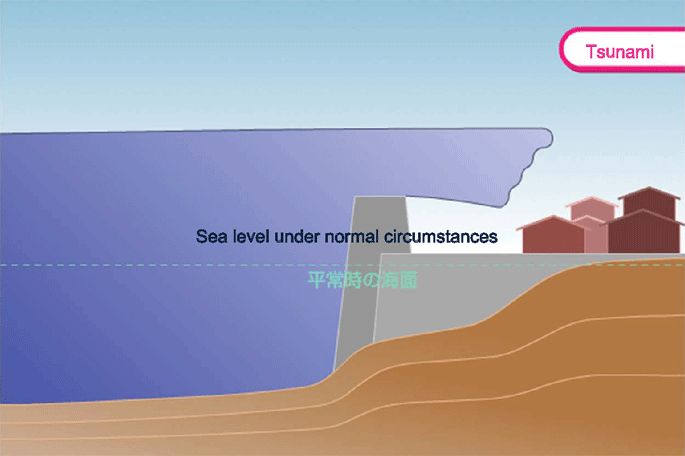
※Differences between a tsunami and a normal wave
A normal wave is generated by wind blowing over the sea surface.
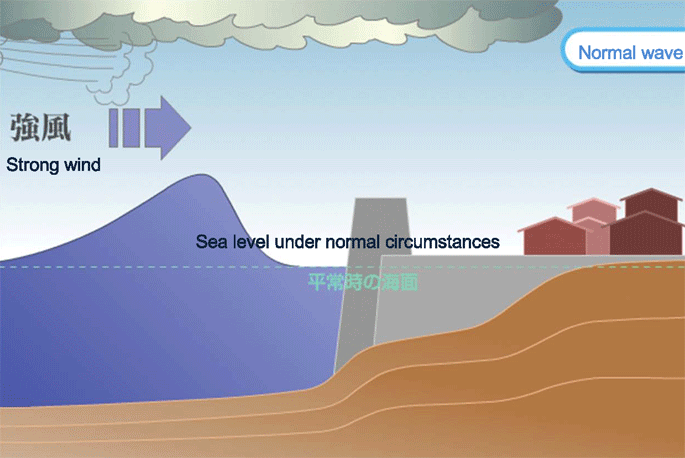
Nomal wave
・A higher part of the wave goes beyond a sea wall.
・Sea level does not change.
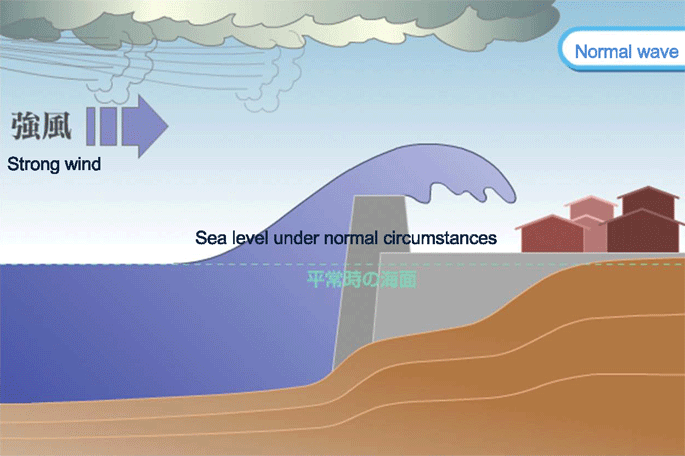
Speed of tsunami
・A tsunami can in the open ocean can travel with speed of greater than that of a jet airplane.
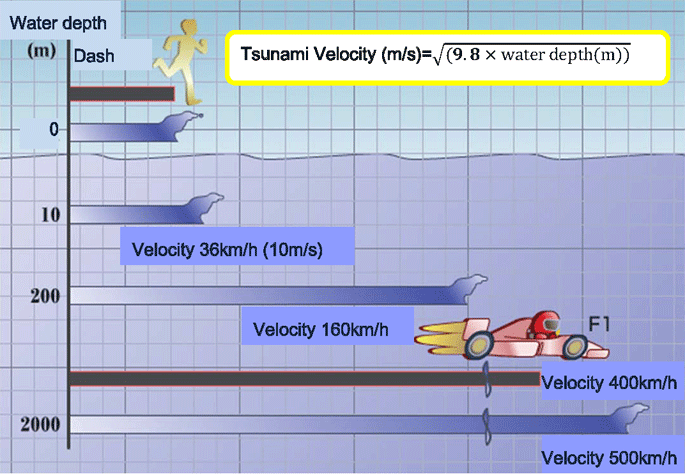
A tsunami can move from one side of the Pacific Ocean to the other side.
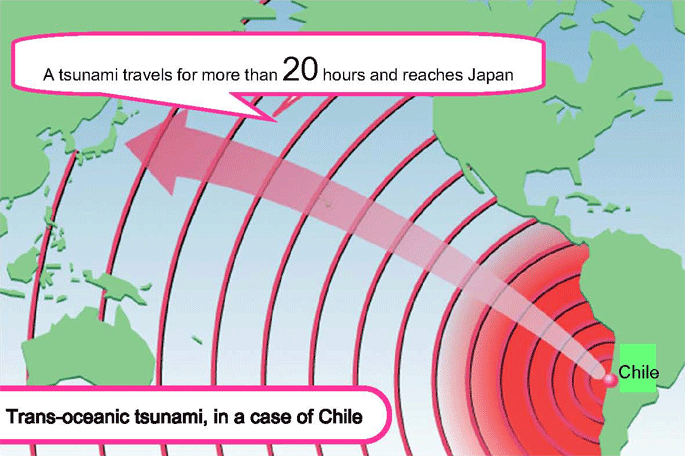
Tsunami Safety Tips
・If you feel strong shaking or weak ground motion for an extended period in a coastal area, or if Major Tsunami Warning/Tsunami Warning is in effect, do not approach coastal area;
・Major Tsunami Warning/Tsunami Warning is issued by TV,radio and,the Internet/disaster management radio communications systems and so on.
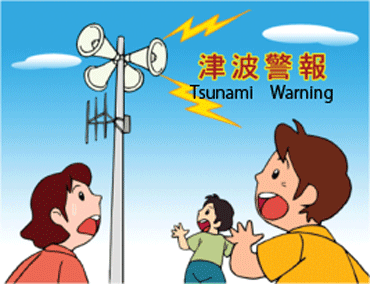
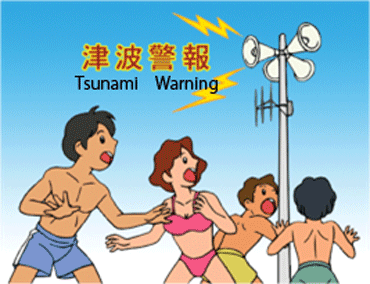
・You should leave coastal or riverside areas immediately.
Do not engage in fishing or swimming activities until Advisories are cleared.
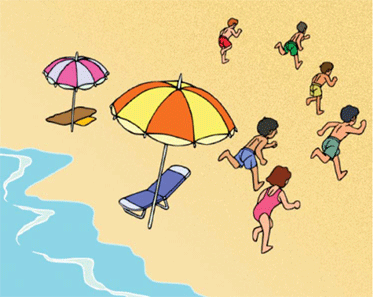
・You should evacuate to a safer place such as high ground ,tsunami evacuation tower or an tsunami evacuation building.
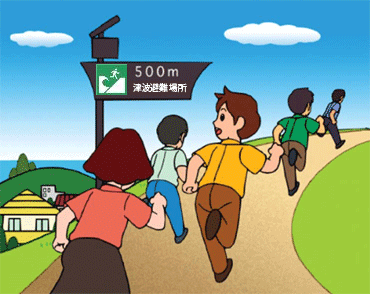
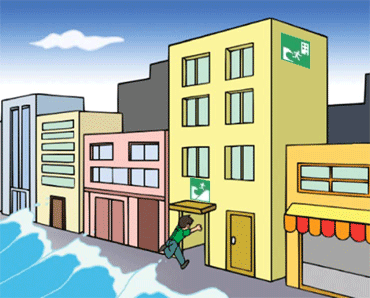
・Remain on alert until the warning is cancelled, as tsunamis may strike repeatedly.
・As long as you have time and strength in reserve, you should evacuate to a safer place.
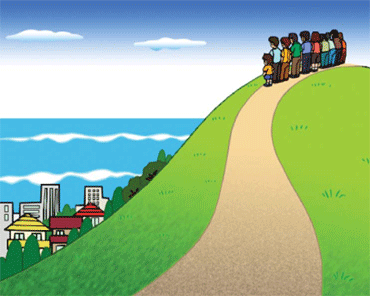
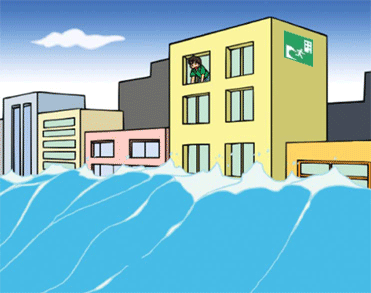
(Links)
Tsunami Warnings/Advisories, Tsunami Information
(Japan Meteorological Agency)
